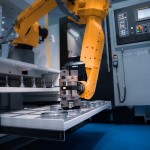Reasons for Chip Crisis
In the simplest terms, chip manufacturers are unable to meet demand. This goes back to the COVID-19 lockdowns in the second quarter of 2020 when demand for work-from-home technology increased exponentially and automakers found themselves competing for the semiconductor capacity located in Asian foundries.
Adding to the problem, downstream operations in South Asia were adversely impacted by the COVID-19 Delta variant, creating further bottlenecks in the supply chain. Malaysia, in particular, performs many "back-end" operations such as chip packaging and testing, which are more labor intensive than wafer fabrication processes, so activity is more easily affected by public health measures.
At the beginning of the pandemic, car companies canceled orders, but as production ramped up again towards the end of 2020, there was no semiconductor supply available. This was compounded by demand increases, particularly at the higher end of the auto market, as low-interest rates were aiding affordability.
While the COVID-19 pandemic was the initial catalyst for the chip shortage, structural factors are also part of the picture. The auto industry is changing, with a significant shift towards automation and electric vehicles. This requires yet more chips, causing further strain on an already stretched industry.
When Will the Chip Shortage End?
More chips will become available in the second half of 2022, and the shortage is nearing an end, according to J.P. Morgan Research. However, available chips may not be the right type to satisfy all demands. Volkswagen believes that semiconductor supply is unlikely to meet auto industry demand until 2024.
Currently, chip capacity is being freed up due to weakness in some end markets, particularly PCs, smartphones, and consumer electronics, where sales have been falling since March 2022. Foundries in Taiwan are beginning to reallocate some of this capacity to the automobile and industrial end markets, which lost out to other sectors during the COVID-19 pandemic. However, cars generally require older chips, which are fundamentally different from those used in PCs and smartphones.
The Semiconductor Shortage and its Impact on Auto Supply Chains
In June 2022, the U.S. seasonally adjusted annual rate (SAAR) for light vehicle sales came in at 13.22 million, which was up 3% month-over-month but down 14% year-over-year, reflecting the industry’s difficulties. Industry volumes were lower for the 11th consecutive month, down 12% year-over-year. However, volumes were up 2.6% month-over-month.
On the demand side, incentives have fallen to the lowest levels since January 2013. This is indicative of high consumer demand in the auto aftermarket, as retailers do not need to offer cash incentives to attract consumers.
Global light vehicle production is returning to pre-pandemic levels.
"We are noticing that major OEMs are expanding production across plants," said Jose Asumendi, with car makers announcing plans to hire more staff and invest more in their manufacturing facilities. Stellantis Vigo (Spanish car manufacturer) plans to hire more than 1,400 workers to activate two new shifts this fall. The company also announced it will produce the latest Fiat Doblo in Spain and it is expanding production in its Spanish plants. Volkswagen is increasing production in Germany and has invested 1 billion euros ($1.03 billion) in converting its plant in Emden to manufacture electric cars. Output is also expected to increase at its electric vehicle (EV) factory in Zwickau after production was interrupted when Russia invaded Ukraine.
Conclusion
The shortage is nearing an end, according to J.P. Morgan Research. However, available chips may not be the right type for all demands. Global light vehicle production is returning to pre-pandemic levels.






